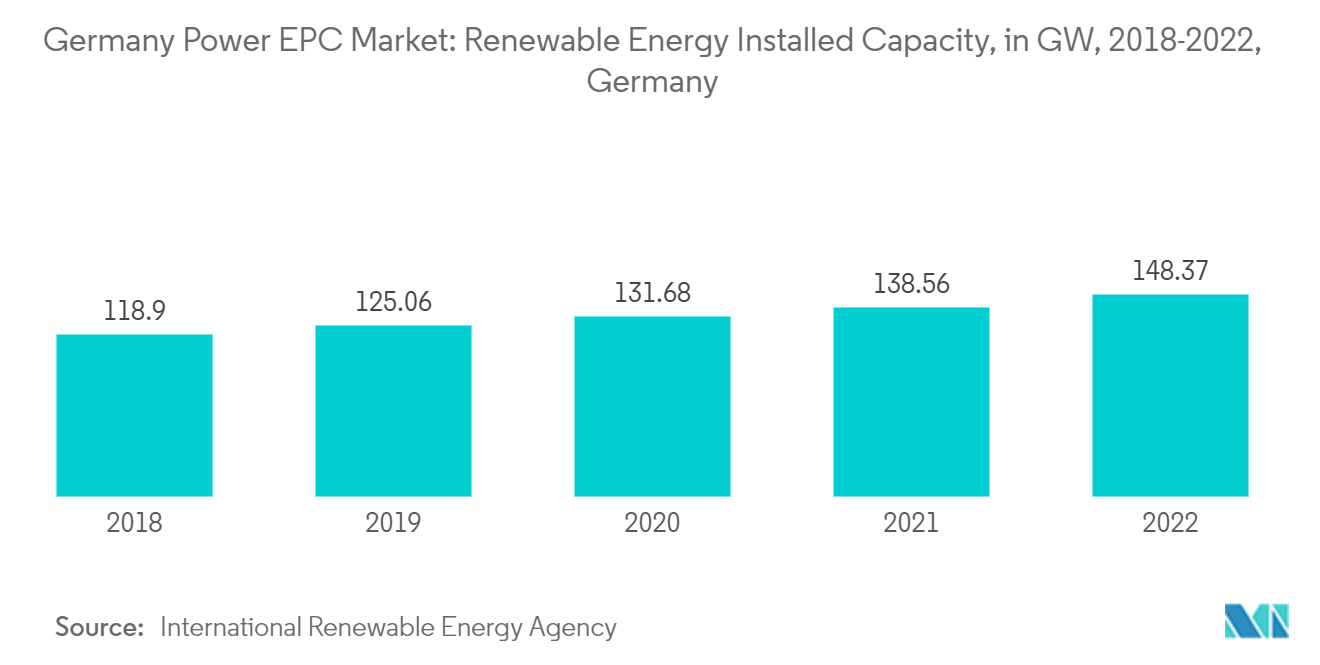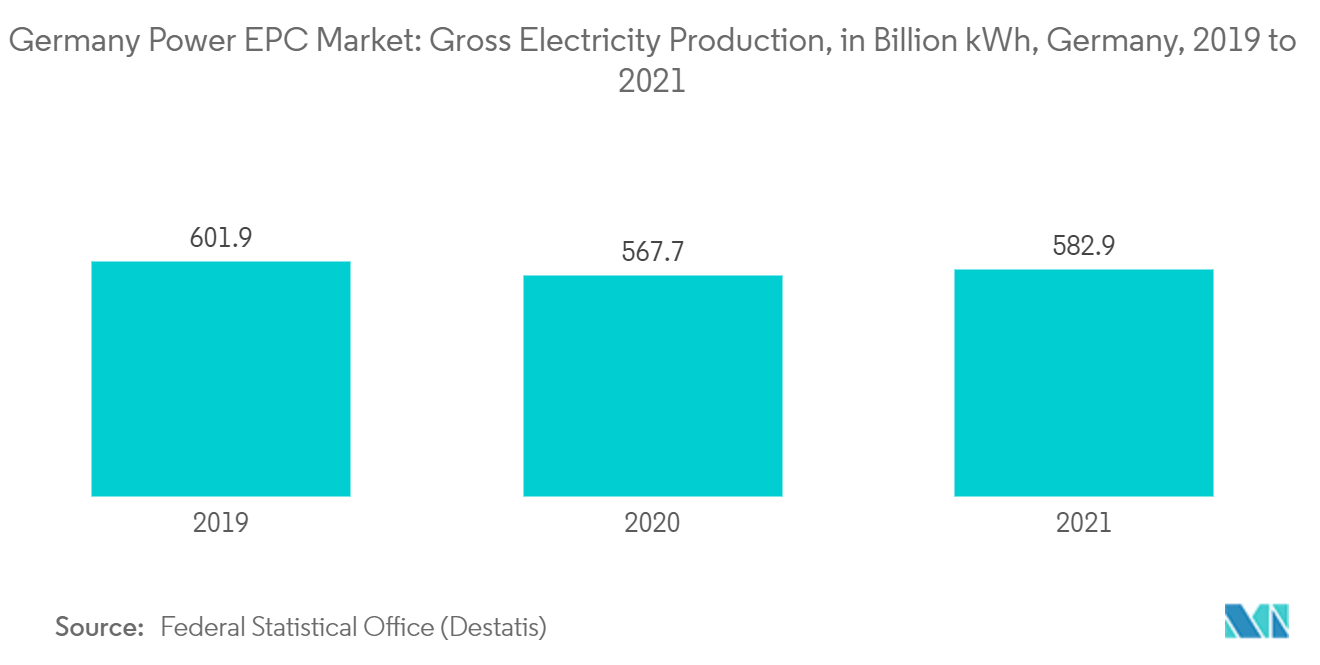Market Trends of Germany Power EPC Industry
Renewables is Expected to Witness Significant Growth
- Germany is one of the largest nations in the European region and the region's largest energy consumer. Renewable energy sources produced approximately 46.3% of total electricity production in 2022, which is consistent with the German government's aim of increasing the share of renewables to at least 40% of total electricity production by 2050.
- According to the International Renewable Energy Agency, in 2022, Germany installed 148.37 GW of renewable energy, which was a 7% rise in the total year-on-year installed capacity compared to 2021. Further, the installed capacity of solar, onshore, and offshore wind sources is expected to increase exponentially, making it one of the largest markets for solar and wind EPC services.
- For instance, in February 2023, GE Renewable Energy stated that it had been chosen by the German firm wpd to supply 16 onshore wind turbines for three wind farms to be built in Landkreis Uelzen, Niedersachsen, 100 kilometers south-east of Hamburg. The deal also includes a 15-year full-service contract with a 5-year extension option. The three wind fields are all within a 20-kilometer radius of one another. The first two projects, Bankewitz and Müssingen, are anticipated to be completed and operational by the end of 2023, with Flinten following in the first quarter of 2024. The three wind farms will generate enough energy to run the equivalent of approximately 90,000 households per year.
- Germany's renewable industry is anticipated to grow as a result of the country's emission reduction targets of at least 65% by 2030 and at least 88% by 2040. The country intends to attain climate neutrality by 2045 (five years ahead of the EU goal) and negative greenhouse gas emissions by 2050. Germany is expected to increase the deployment of renewable energy sources in the nation in order to meet its ambitious targets.
- Hence, as per the abovementioned points, the renewable energy segment in the country is expected to increase significantly during the forecasted period.

Supportive Government Policies to Drive the Market
- The power EPC market is expected to increase in Germany due to favorable government policies to increase the power generation capacity in the country and reduce its dependence on coal and natural gas to meet its electricity demands. Additionally, the electricity demand in the country has increased significantly in recent years.
- According to the Federal Statistical Office (Destatis), the electricity generation in the country was recorded at 582.9 billion kWh in 2021, which was 2.7% higher than compared to the previous year.
- In Germany, the "Solarcity Master Plan" was adopted to expand the deployment of solar panels across the city's rooftops, supplying around 25% of the city's electricity needs with solar power by 2050. It included various recommendations to kickstart the solar expansion in Berlin, including incentives and education for property owners and removing regulatory barriers for photovoltaic systems.
- Moreover, in response to the Russian invasion of Ukraine, Germany has announced plans to accelerate the deployment of renewable energy sources to reduce its dependence on Russian natural gas imports. The country has increased its renewable energy ambitions and moved its initial targets earlier.
- For instance, in September 2022, the government of Germany announced tenders for 1.5 GW of solar energy. The tenders have been launched to accelerate the country's solar energy growth. As per the announcement, the bidders were to submit their plans by January 2023.
- Large-scale wind and solar projects were ongoing in the nation as of July 2022, with German power EPC companies developing the majority of them. In June 2023, Belectric won the contract for building projects with a cumulative capacity of over 200 MW from Ampyr Solar Europe. The first two projects are expected to have a capacity of 85 MW and 65 MW, respectively, and will be located in the Brandenburg province. The EPC contract for the 65 MW project also includes constructing a 25-kilometer line and a substation. The construction was expected to start before the end of 2022.
- Therefore, due to the above mentioned points, favorable government policies are expected to drive the market.


